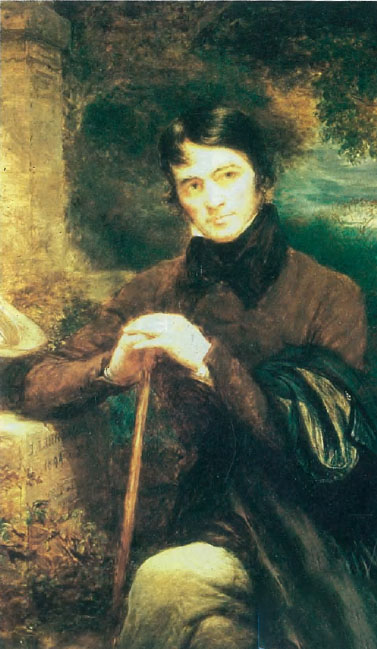
THOMAS CARLYLE BECAME one of Britain’s most noted essayists and historians. His parents belonged to a small sect of strict Calvinists who disapproved of poetry and fiction, so Thomas, the oldest of nine brothers and sisters, had the direction of his literary path predetermined. The road to literary accomplishment, though, was a winding one. As a young man, he shared his parents’ strong religious convictions and voiced no objections to his father’s desire that Thomas enter the ministry. The young man struggled through school, though, the victim of typical schoolyard bullying. His parents thought his reaction to this somewhat unseemly for an aspiring cleric, because he defended himself with his fists instead of turning the other cheek. Thomas held his teachers in low esteem, and during his studies at Edinburgh University he did much of his learning alone in the library.
He completed his four-year course of study at the university, but his family could not afford the expense of the further three years of full-time schooling necessary to earn a degree in divinity, so Thomas enrolled in a program that allowed him to study full-time for just one more year, followed by six years of part-time study while working to earn an income. But as time dragged on, he grew ever less enthusiastic about a future in the ministry. Even as his divinity studies lost their appeal, so too did his work as a teacher. Possibly as a means of escape, he immersed himself in books.
[caption id="ThomasCarlylesHouse_img1" align="aligncenter" width="377"]

© THE NATIONAL TRUST FOR SCOTLAND
[caption id="ThomasCarlylesHouse_img2" align="aligncenter" width="235"]

MUSEUM NOTES
The Thomas Carlyle House, Ecclefechan, Lockerbie
Telephone: 01576 300666
Admission: £2 for adults, £1.30 for children and seniors, £5.30 for families
Hours: Open May-Sept, Mon-Fri, 1.30-5.30 pm
Thomas abandoned his studies in 1817 and then his teaching position the following year. Finally, at about this same time, he rejected his Christian faith. Throughout the next several years, he worked on and off as a tutor, earning a living, barely, but suffering from chronic depression. Out of these experiences a writing career gradually began to take form. Through his intense reading, he developed a love for German literature and made it the subject of his earliest writing.
[caption id="ThomasCarlylesHouse_img3" align="aligncenter" width="489"]

© THE NATINAOL TRUST FOR SCOTLAND
Carlyle published a number of translations of German writers, essays, and articles before he completed his first major work, Sartor Resartus, which has been described as “a fantastic hotchpotch of autobiography and German philosophy, written with mingled bitterness and humour.”
He married Jane Welsh in 1826, and the relationship was stormy. Both Thomas and Jane were combative, and Thomas’ meager income forced them into a spartan lifestyle for which Jane’s relatively pampered childhood had ill-prepared her. The stress resulting from his marriage may have contributed to the ongoing poor health Thomas suffered. Nevertheless, the couple remained together until Jane’s death in 1866.
THE STRESS RESULTING FROM HIS MARRIAGE MAY HAVE CONTRIBUTED TO THE ONGOING POOR HEALTH THOMAS SUFFERED.
Carlyle’s biographies included works on Oliver Cromwell and Frederick the Great. Perhaps his most famous historical book, The French Revolution, is remembered not so much for the quality of Carlyle’s writing, but for the well-known story of how he lent the unfinished manuscript to John Stuart Mill, who accidentally burned it. Carlyle had to rewrite it from scratch.
DURING HIS MOST PRODUCTIVE YEARS, Thomas lived with Jane in Craigenputtock, Dumfriesshire, as well as in London. Carlyle’s father and uncle built the Thomas Carlyle House in Ecclefechan, where he was born. Now in the care of the National Trust for Scotland, it has been furnished in the way it would have been in Carlyle’s day. It now houses a collection of his personal items, including many of his letters, and portraits. The writer’s grave is in the nearby Ecclefechan churchyard.





Comments